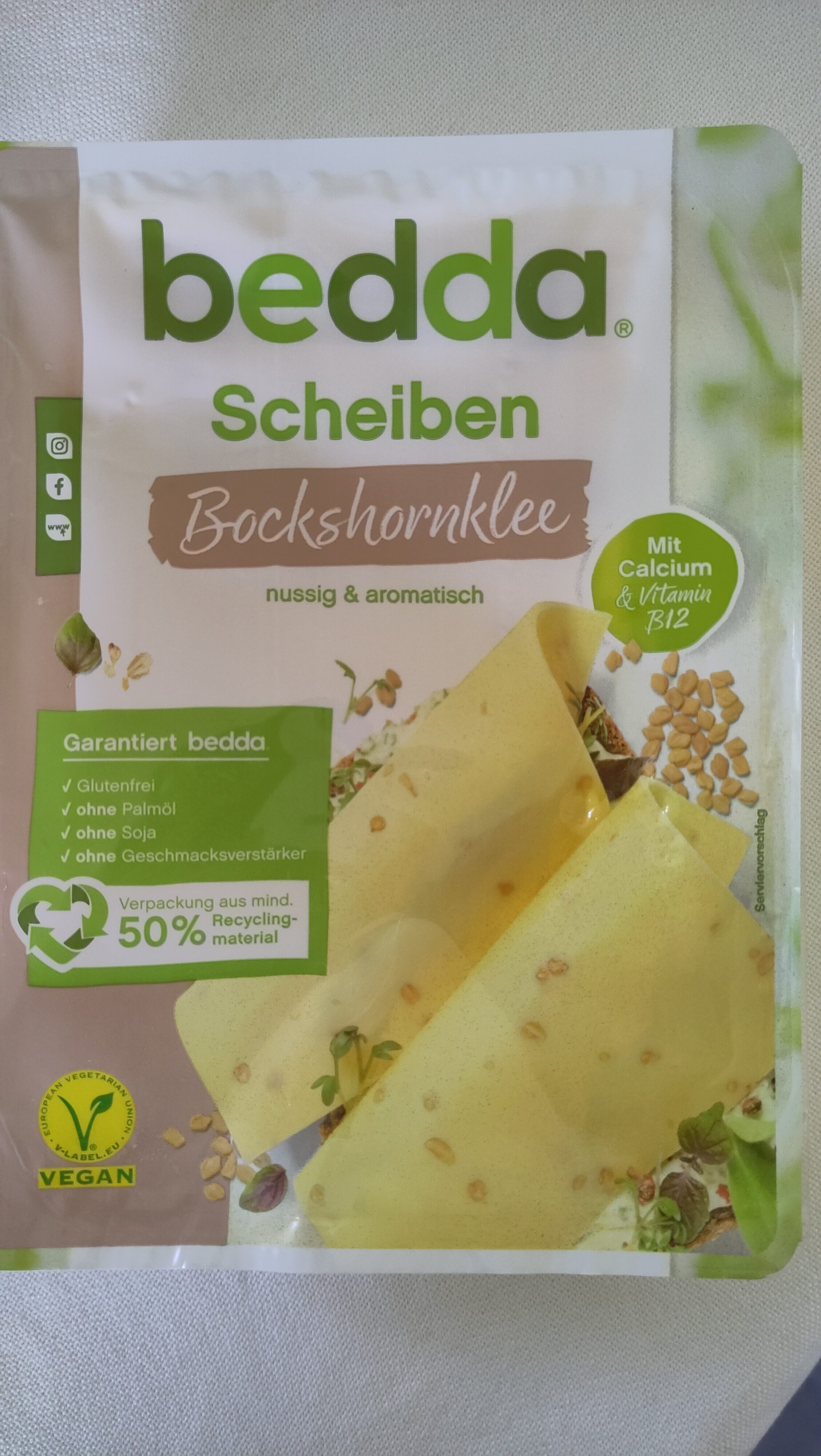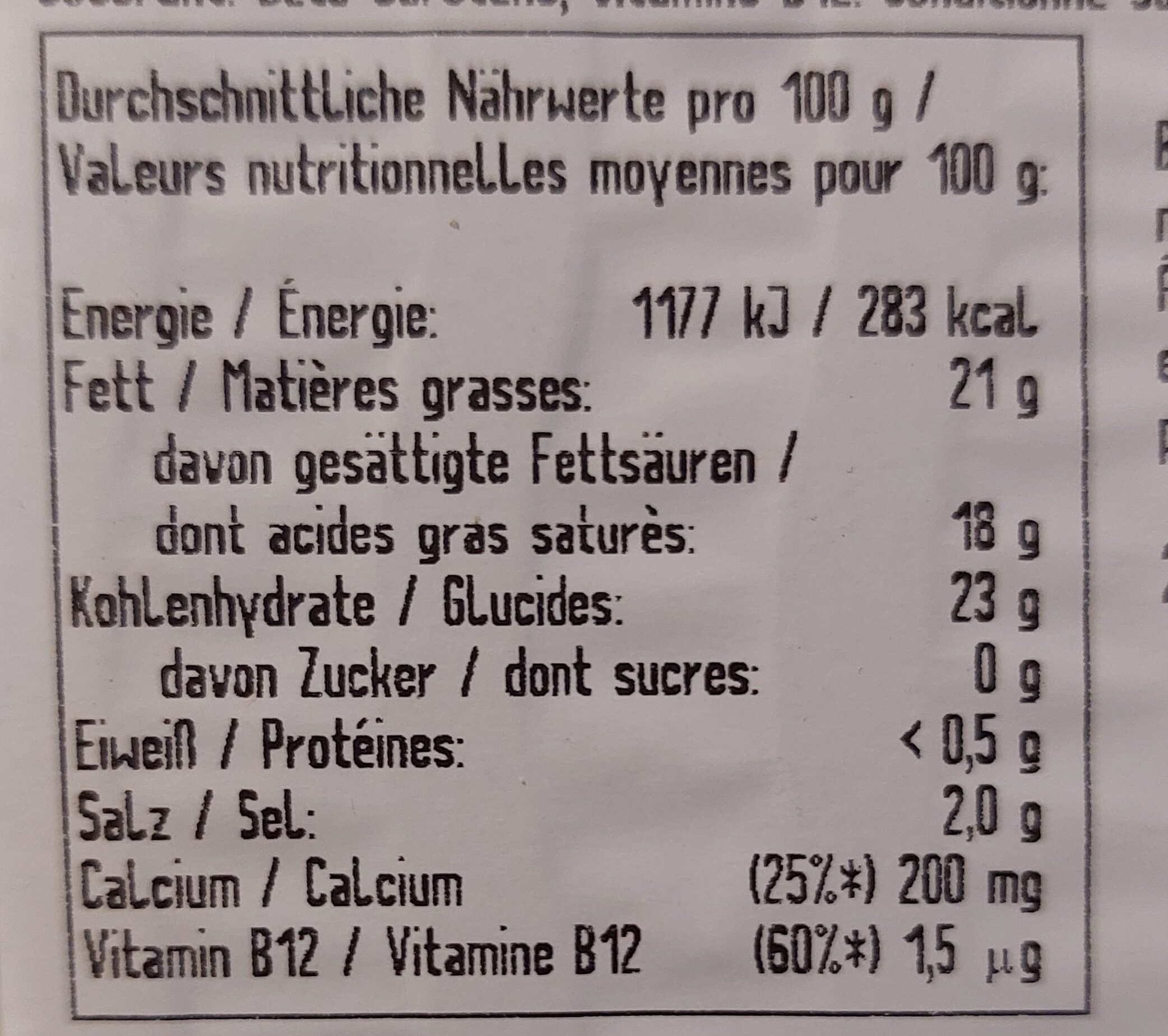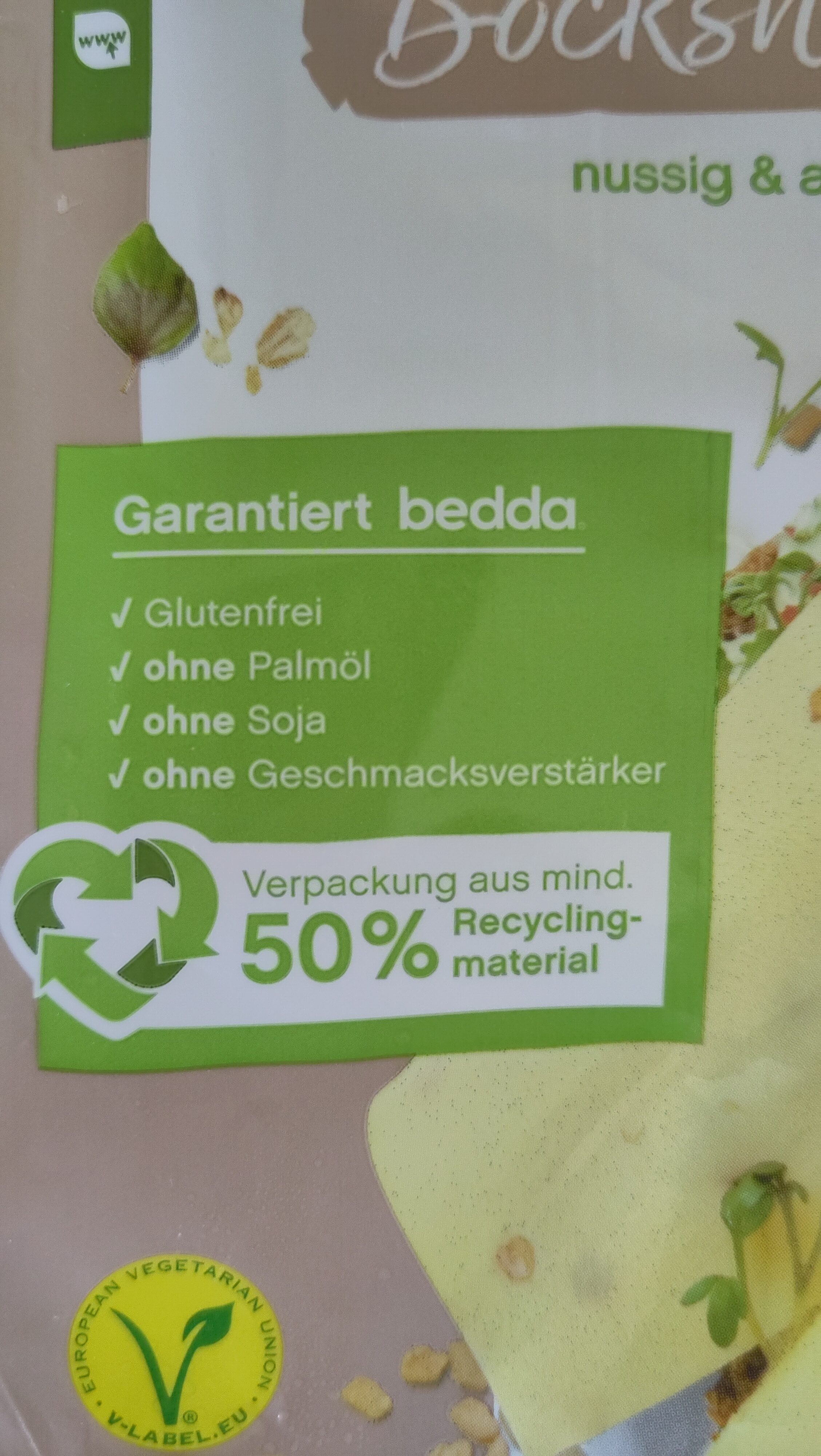Bedda Scheiben Bockshornklee - 150g
This product page is not complete. You can help to complete it by editing it and adding more data from the photos we have, or by taking more photos using the app for Android or iPhone/iPad. Thank you!
×
Barcode: 4056924002206 (EAN / EAN-13)
Quantity: 150g
Packaging: Plastic
Brands: Bedda
Categories: Plant-based foods and beverages, Dairies, Fermented foods, Plant-based foods, Fermented milk products, Cheeses, de:Pflanzenbasierter Käse
Labels, certifications, awards:
No gluten, Vegetarian, No preservatives, Vegan, European Vegetarian Union, European Vegetarian Union Vegan, No flavour enhancer, No palm oil, No soy

Countries where sold: Germany
Matching with your preferences
Report a problem
Data sources
Product added on by anticultist
Last edit of product page on by bartolomeu.
Product page also edited by 8moments, femmenoire, gerhard-skarsetz, grumpf, inf, kiliweb, lourensvdzee, moon-rabbit, openfoodfacts-contributors, packbot, pqfacts, prepperapp, professordoc, roboto-app, tacite-mass-editor, yuka.sY2b0xO6T85zoF3NwEKvlkdJffzfn2jPLx_VphOI3fO8Bcz6SNMpu6zZC6s, yuka.sY2b0xO6T85zoF3NwEKvlmZOXfPCpgDLOwXvnWTb94uTD6fuRPRo2tT-Iag.












